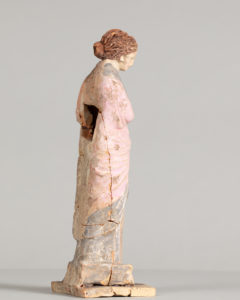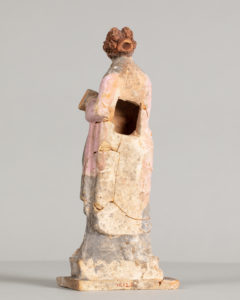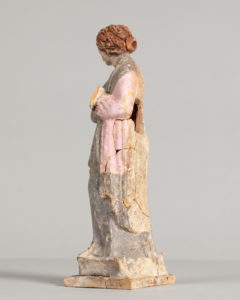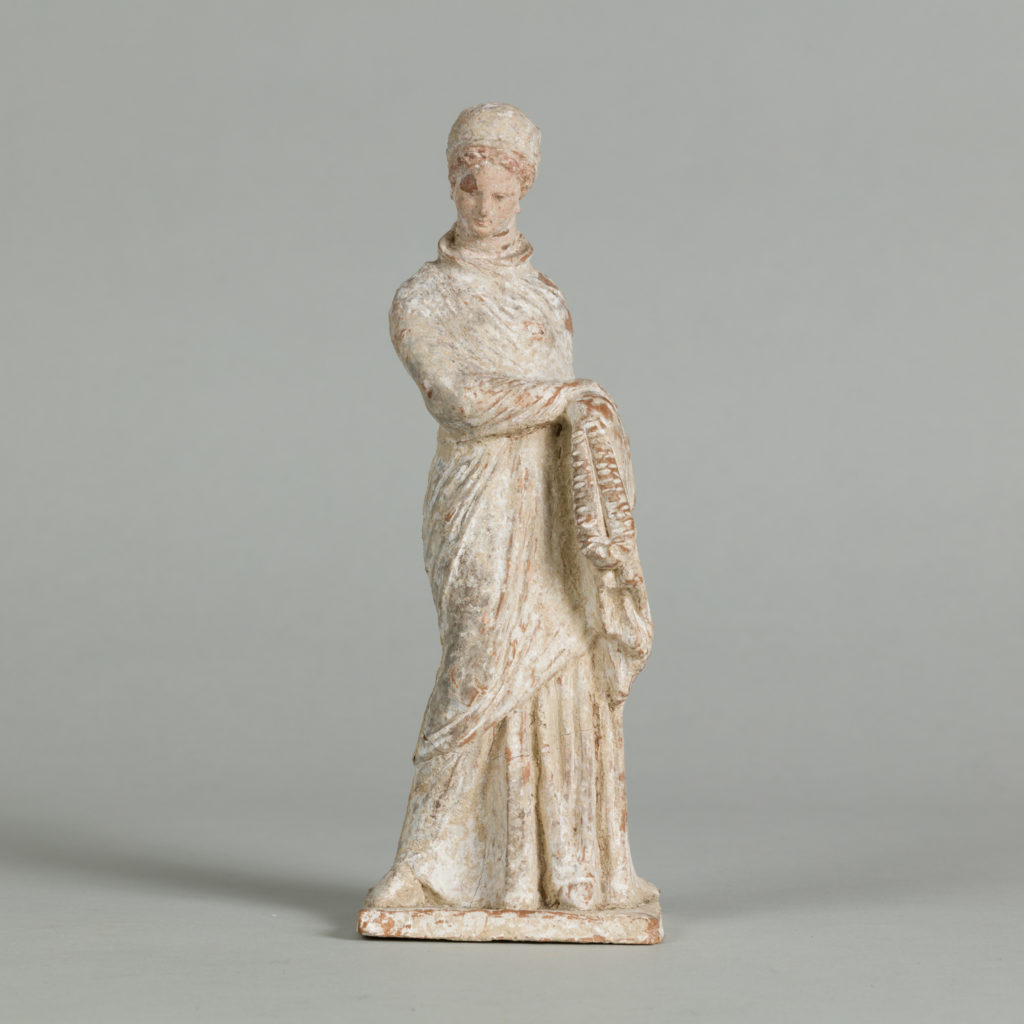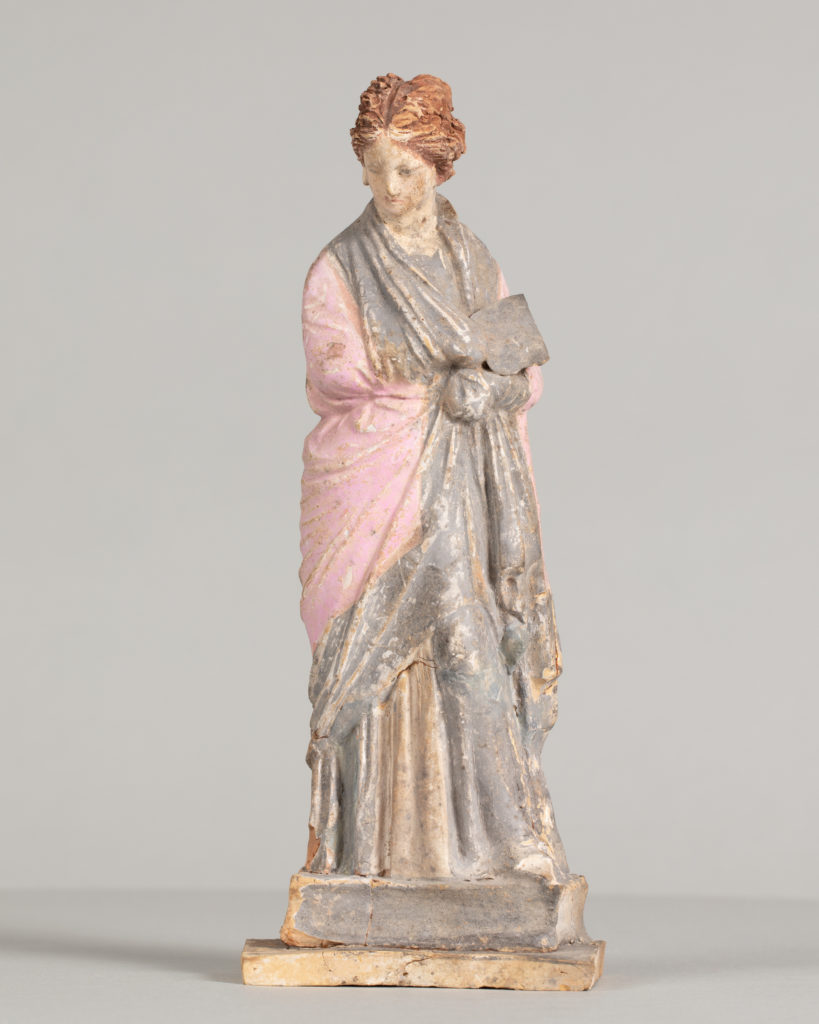
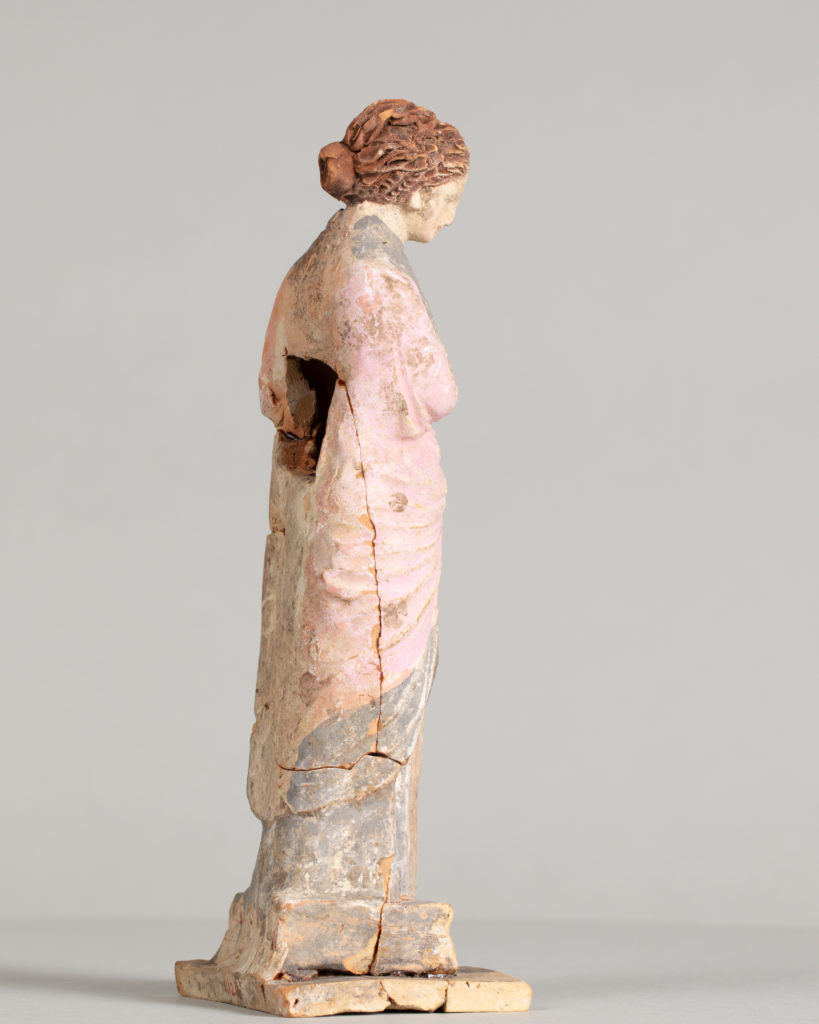
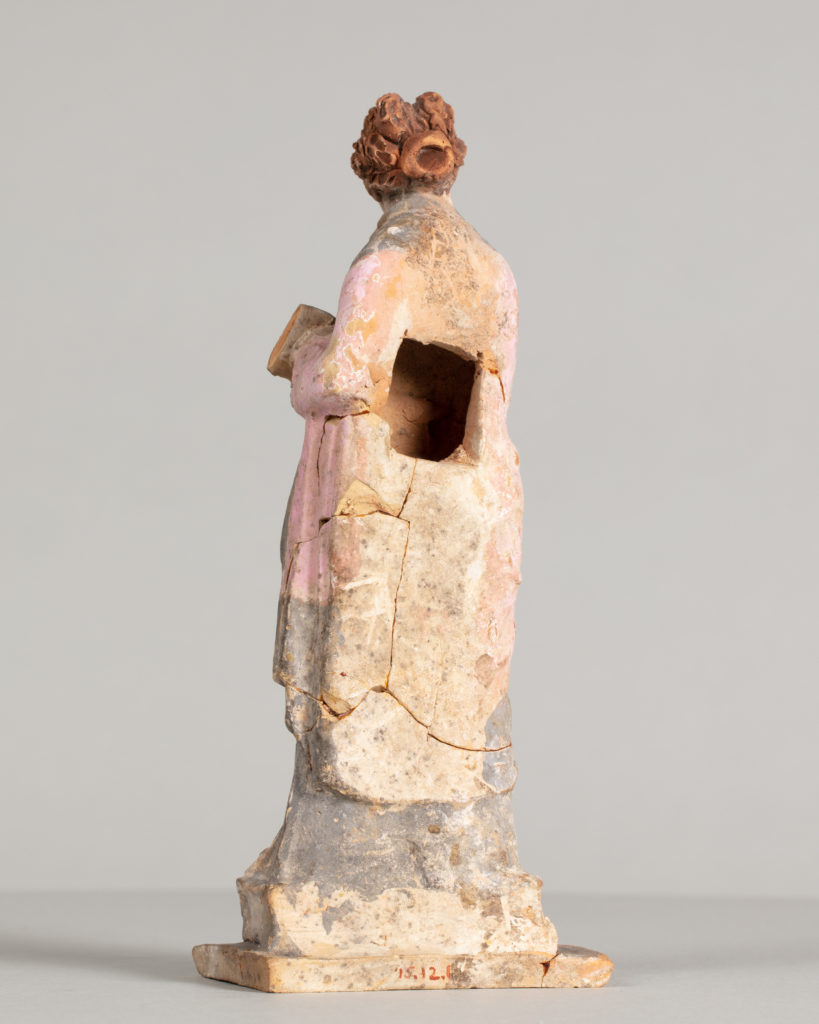
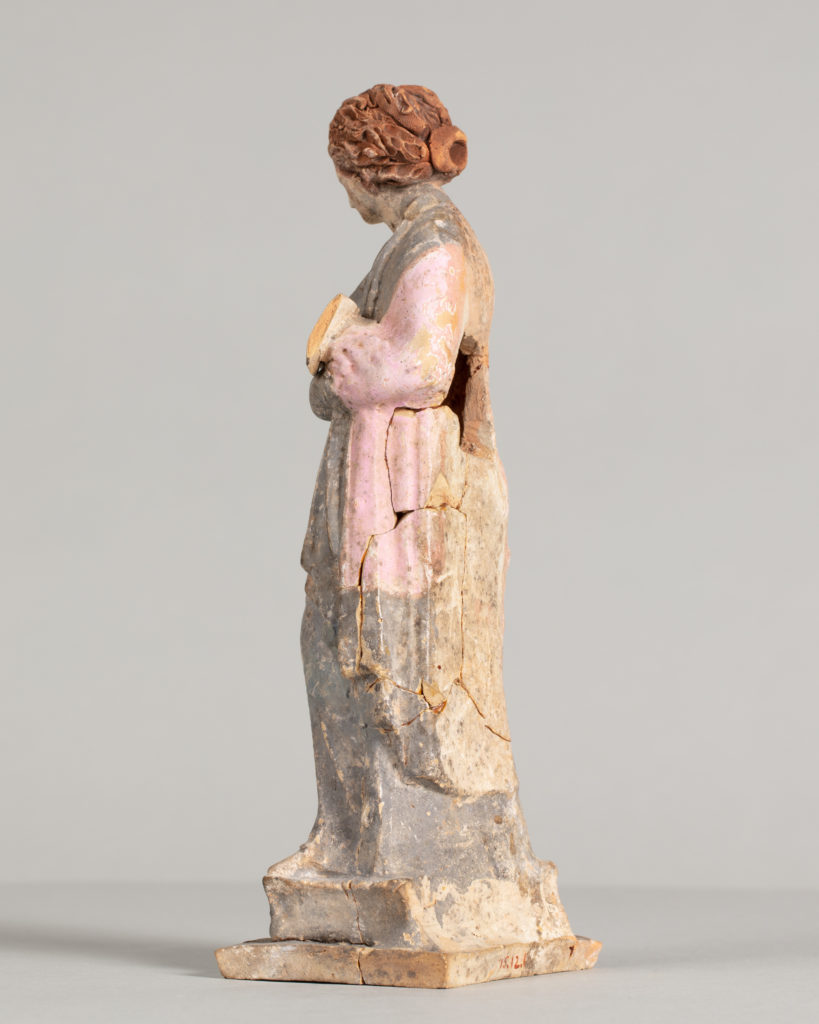

Gift of Edward Perry Warren, Esq., Honorary Degree 1926
1915.12.1Tanagra statuettes, terracotta figurines deriving their name from the masses excavated at Tanagra, were created in the Greek region of Boeotia between 330 and 200 BCE. This group of only three of the many Tanagra figurines in the Museum’s collection demonstrates the variety and diversity that exist in size, garments, and dynamic pose. Edward Perry Warren, like many collectors of antiquities in the 19th century, purchased several statuettes along with other figural types from Tanagra.
The function of these female figurines is still debated. The statuettes were not only unearthed in tombs but also discovered in temples. Our contemporary understanding of their function is further complicated by their discovery during the nineteenth century, a time when findspots were rarely recorded and archaeological contexts went unreported. One theory is that these objects were presented as votive offerings that coincided with the moment a girl became recognized as a woman, marked by her marriage. The presence of Tanagra figurines in the tombs of young females could be understood, then, as marking this transition for a girl who died before she was considered old enough to be wed. This proposed function within the tomb is rather convincingly reinforced by the terracotta statuette of a girl holding a dove as this animal was frequently depicted in Greek funerary art of children, and the fuller frame and face of the figure suggest she represented a girl rather than a woman.
Tanagra figurines were mold-made, with hollow cavities and openings on the rear to prevent explosions during the firing process. The statuettes were first painted with a slip made of water clay that was applied prior to the firing process. Subsequent color was then added, although several of the figures within this grouping have lost the more brightly colored pigment, making the underlying white slip visible. There is significant variety in the size and gestures of Tanagra figurines. Among this group, the women have been depicted holding a fan, a chaplet, and a dove. Other examples are more complex still, among them women depicted in more activated poses.
Following the presentation of Tanagra statuettes at the Universal Exhibition of Paris in 1878, these figurines became objects from the ancient Mediterranean past that were within reach for collectors with a wide range of purchasing power. Thus, Tanagra figurines became commonplace not only within the holdings of antiquities collectors in late nineteenth century Europe but also within the households of individuals who were not particularly oriented to the study of the classical world. The popularity of these statuettes resulted in the production of many forgeries as well as later. During the period in which Warren served as a purchasing agent for Edward Robinson, he sold several Tanagra statuettes to the MFA, Boston, some of which were purchased in Athens and others in Paris.
Before 1915, collection of Edward Perry Warren; 1915, gifted to the Bowdoin College Museum of Art by Edward Perry Warren.
Collector
A testament to his impact as an influential twentieth-century American antiquities collector, Edward Perry Warren’s (1860–1928, H ’26) name is linked to hundreds of ancient objects housed in institutions across the United States, including more than five hundred works at the Bowdoin College Museum of Art alone.

